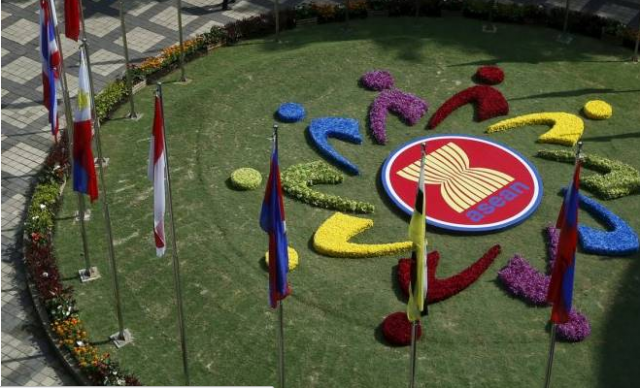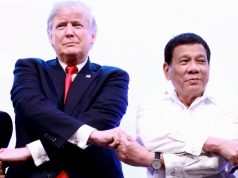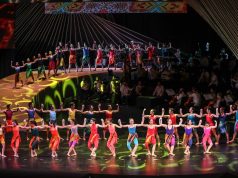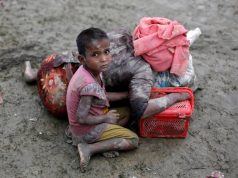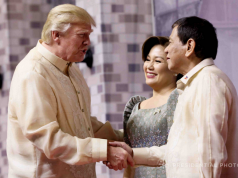MANILA, Philippines — On its 50th year, and under Philippine chairmanship, the Association of South East Asian Nations or ASEAN is being hyped to have brought development to its member countries. Themed “Partnering for Change, Engaging the World” for 2017, the convergence of ASEAN’s ten-member countries and its dialogue partners is anticipated to bolster the regional economy and its contribution to the global market.
Beyond the government-declared week-long holidays in Metro Manila in the duration of the ASEAN meetings, this is an opportune time to note how ASEAN has only been “One Communty” for the big players of the global market and not for the region’s peoples:
1. Selling the region’s resources through policies
One of ASEAN’s most compliant member-nations, Philippine economic policy for the past three decades has opened the economy ever wider for global economic powers to benefit from cheap natural resources, cheap labor and captive markets through various laws. These include the Foreign Investments Act, Retail Trade Liberalization Act of 2000 and the Philippine Mining Act of 1995.
Past administrations as well as the current Duterte administration have also always been persistent on changing the Constitution to remove remaining economic protection and restrictions to trade and investment. Duterte’s economic managers are determined to shorten the Foreign Investments Negative List (FINL) and open more sectors such as telecommunications, the media, education and business enterprises to foreign ownership by the end of the year. The ASEAN’s push for further economic liberalization is also evident in the administrations’ list of priority bills like the Ease of Doing Business Act. Aside from this, the government will also streamline customs procedures and create a National Single Window linked to ASEAN’s planned Single Window.
This is in accordance with the ASEAN Economic Community’s (AEC) aim to create an ‘open ASEAN’ even to non-ASEAN member countries. Its primary objective is to “transform ASEAN into a single market and production base, a highly competitive region, a region of equitable economic development, and a region fully integrated into the global economy”. Regardless of unequal levels of development, ASEAN countries have been entering various agreements liberalizing trade in goods, investments and services. It has also started negotiating as a bloc: the Regional Comprehensive Economic Partnership (RCEP), the mega-FTA between ASEAN and the six countries it has an FTA with – China, Japan, South Korea, Australia, New Zealand and India, is currently under negotiation.
2. Expanding trade and investment in sectors vital to business but not to national development
AEC made doing business easy for TNCs but has disregarded supporting real development for its underdeveloped members like the Philippines, Vietnam and Cambodia. These economies have not actually improved significantly to finally become “developed”.
ASEAN boasts of its relatively stable FDI inflow contrary to the global trend, experiencing only a slight decrease from US$121 billion in 2015 to US$98 billion in 2016. Note that the top sources are EU, Intra-ASEAN, US and Japan. [1]
But this amount cannot be said to have a significant impact on economic development. Almost 75% of ASEAN’s total FDI flow went to services, the bulk of which amounting to US$33.6 billion went to the financial and insurance sectors. Industry accounts for only 18% or US$17.3 billion, with Japan as the top contributor, investing US$21 billion particularly in manufacturing.[2]
Also, being a mere part of the global assembly line, the largest share of ASEAN’s trade went to intermediate goods in terms of both exports and imports. Electrical machinery and equipment and parts thereof; sound recorders and reproducers, television image and sound recorders and reproducers, and `parts and accessories of such articles topped the list for exported and imported commodities at 23.6% and 20.3% respectively.
3. Peddling the labor force
Since it opened its economy as a bloc, TNCs from developed countries were immediately captured by ASEAN’s large cheap labor force. In 2016, its working age population was at 430 million or 67.8% of ASEAN’s total population.[3] Low labor costs had electronics companies such as Korea’s Samsung and LG and America’s Intel building factories in Indonesia, Thailand, the Philippines and Vietnam. The biggest winner in this race to the bottom is Vietnam, FDI inflows to which rose by 7%.[4]
Aside from slave-like wages, the global assembly line also brought with it intensive labor exploitation and abuse. For example, workers at garment factories that supply America’s Walmart in Cambodia are already denied of benefits and receiving harsh penalties for engaging in union activities including retrenchment, they are also forced to work overtime even during the hottest season resulting to mass collapsing episodes. Complaints of sexual harassment were also reported.
Aside from its large pool of cheap labor force, ASEAN also sells its massive captured market. Its 2016 population of 635 million is the 3rd largest population in the world next to China and India.[5] Singapore is the largest host of TNC headquarters in the region targeting the Asia and Pacific markets.[6] One of the reasons why Japanese zaibatsus like Toyota, on the other hand, chose Thailand to be its regional hub is because it is the regions’ leading consumer and market for automotive products.[7]
4. Hampering national progress
This ASEAN “openness” has in fact closed the door to the development especially of backward economies such as the Philippines. Prospects for rural development and domestic industrialization have stayed grim due to the economic framework and policies of countries that follow the mantra of so-called “globalization”.
The share of production to Philippine gross domestic product (GDP) steadily dropped from 60% in the 1950s to the 1970s to just 39.2% in 2016. Agriculture fared no better dropping to 9.2% from more than 30% during the same time span. Manufacturing managed a 24.3% share in GDP in 2016 but it is also noteworthy that 63% of the gross revenue of the top corporations in manufacturing went to foreign TNCs.
Government’s hollow manufacturing drive can be gleaned from the Comprehensive Automotive Resurgence Strategy (CARS) which favors already dominant Japanese, American and Korean automotive companies. It is also very import-dependent. The local content of the Philippine automotive parts sector is only 40% and many of its products involve the mere assembly of car parts components. Over 90% of automotive parts that the country exports are produced by TNC subsidiaries or affiliates, including the Japanese zaibatsus and German firm Telefunken.[8]
If ASEAN indeed opened opportunities for the Filipinos, it is mostly for old time big players like Tan-Caktiong, Ayala and Aboitiz. Almost 4 decades of ASEAN integration has not improved the lives of the majority of the Filipinos. There are still 66 million Filipinos living at Php125.00 per day and worse still are the 21.9 million Filipinos struggling at Php60.00 per day. Combined unemployed and underemployed Filipinos have reached 11.5 million. Only a little over half of employed Filipinos are paid at least the minimum wage, the highest of which is in the National Capital Region at Php516 per day, which is not even half of the Php1,130 per day Family Living Wage that a family of six members needs to live decently.
5. Non-adoption of principles of genuine cooperation
ASEAN pushes partnerships and engagements that are highly favorable to capitalists disregarding its effects to the majority of its people. This is contrary to what history has seen to be doable alternatives to regional formations like the ASEAN– such as the 1955 Bandung Conference or the Asian-African Conference. It was attended by 29 countries representing some 1.5 billion people or the majority of the world’s population at the time. It “considered problems of common interest and concern to countries of Asia and Africa” and its primary objective was to “discuss ways and means by which their people could achieve fuller economic, cultural and political co-operation.”
It declared the global South’s agenda to reform the international system to one not defined by power, oppression and exploitation, starting with the decolonization of the Third World. Participants envisioned economic development, and an end to colonialism. The ‘Dasa Sila Principle’ or the conference’s ten principles which promotes world peace and cooperation is still relevant today.
For a country like the Philippines to engage effectively with other nation-states for cooperation and against the domination of capitalist powers, it must also prioritize national development and the welfare of the people. Continued adherence to the neoliberal framework runs counter to this. It should be replaced with pro-people economics putting primacy in supporting its productive forces by implementing policies for agrarian and rural development and building national industries.
There is nothing wrong with forming communities. But communities should serve the interests of the majority of its stakeholders. The Philippine government’s avid participation in the ASEAN community has been consistent with its historically pro-business and pro-foreign stance. A strong clamour from the ground is needed to push for national development and foreign policies that will genuinely benefit the people.

